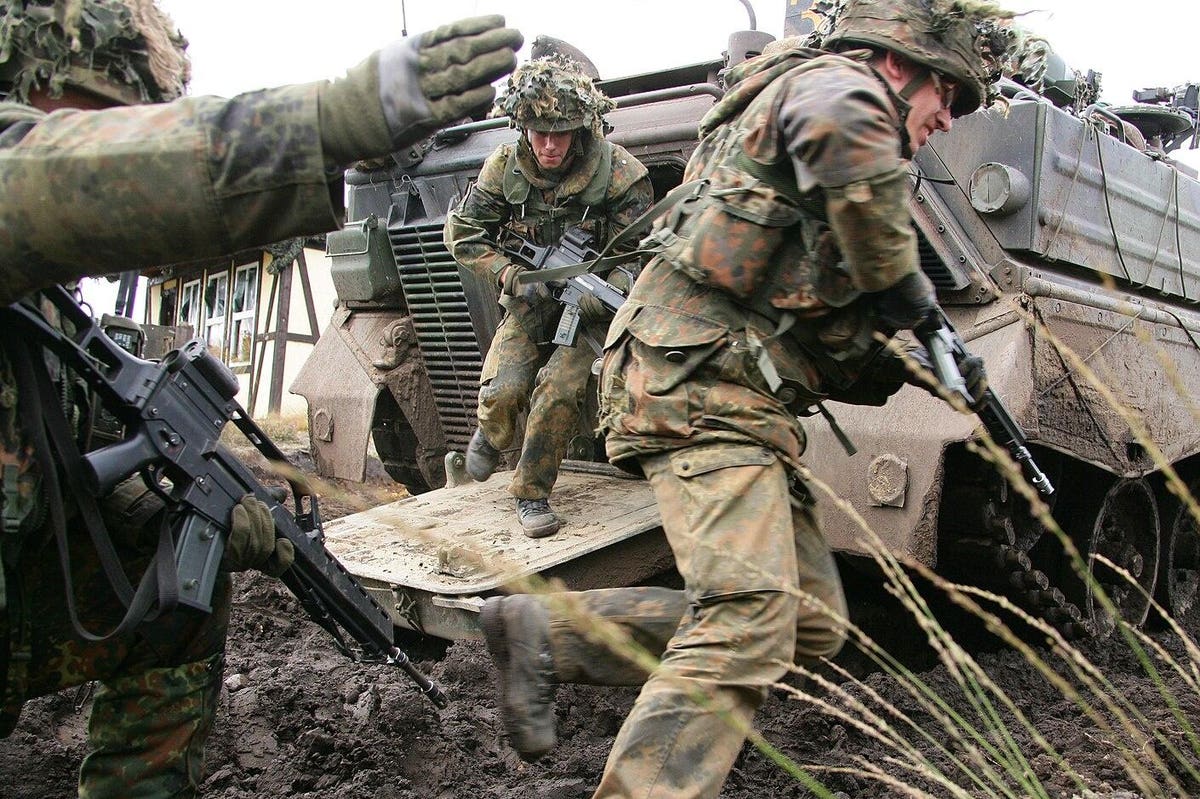In 19 months of hard fighting since Russia widened its war on Ukraine, the Ukrainian armed forces have become adept at assaulting, clearing and holding Russian trenches.
Their tactics prioritize speed and aggression. Armored trucks or infantry fighting vehicles race forward while shooting on the move—and pull to a halt just yards from the enemy trench.
The vehicles drop off the infantry, who don’t waste a second. They sprint directly into the trench and, shouting at each other to coordinate, start clearing with rapid bounds and handfuls of grenades.
This method, dramatically on display in the 10 weeks since Ukrainian brigades launched a counteroffensive along several axes in southern and eastern Ukraine, has the benefit of shock and surprise.
But it can go wrong, as illustrated by a recent video from the area around Robotyne, a key Russian strongpoint on the road to occupied Melitopol. The Ukrainian air-assault force’s 82nd Brigade recently joined the army’s 47th Brigade assaulting the Russian garrison in Robotyne.
The 82nd rides in a powerful mix of ex-British Challenger 2 tanks, American-made Stryker wheeled infantry fighting vehicles and ex-German Marder tracked IFVs. On or before Tuesday, one of the Marders fell into what appears to be a Russian trench—and got stuck.
A video, posted by a Ukrainian soldier after the 82nd Brigade apparently captured the trench, depicts the Marder helplessly stuck in the trench, one track nearly dangling. It’s possible the 31-ton, nine-person Marder was part of the Ukrainian assault force—and rolled a bit too close to the trench.
That a Marder was near enough to a Russian trench to fall into it speaks to the 82nd Brigade’s aggression, which is typical of Ukrainian mechanized infantry and especially typical of the mech infantry from the marine corps and separate air-assault forces.
In their ultimately successful assault on Russian-occupied Makarivka, in the Mokri Yaly River Valley 60 miles east of Robotyne, Ukrainian marines would ride up to a trenchline in thundering columns of tanks and armored trucks, and dismount from the trucks a hundred feet or less from the trench before sprinting straight in. The 82nd’s Marders obviously got even closer than that.
Compare the Ukrainians’ close-and-fast trench-clearing tactics to the Americans’ version of the same tactics—which are much more deliberate. “The platoon deploys and establishes a base of fire,” the U.S. Army’s Field Manual 7-7 explains. “The platoon leader determines that he has sufficient combat power to maneuver and assault the trench line.”
Part of the platoon positions a short distance—a couple of hundred yards wouldn’t be unusual—from the trench and, alongside the unit’s M-2 fighting vehicles, lays down suppressive fire. An assault team bounds forward, scurrying from cover to cover underneath obscuring smoke.
“The first two soldiers … of the assault fire team move to the edge of the trench; parallel to the trench and on their backs, on the squad leader’s command [they] cook-off grenades (two seconds maximum), shout, ‘Frag out!’ and throw the grenades into the trench,” according to FM 7-7.
“After ensuring that both grenades detonate, the soldiers roll into the trench, landing on their feet and back-to-back. They fire their weapons down the trench in opposite directions.” More members of the assault team roll in, and the trench fight begins.
Where the Americans would dismount farther from the trench and assault in cautious bounds, sometimes lying prone, the Ukrainians roll right up and jump straight into the trench, upright the entire time.
That the Ukrainian method works is indisputable: Kyiv’s brigades steadily are rolling up Russian trenches along at least three axes around Robotyne, along the Mokri Yaly River and also farther east around Bakhmut.
But driving close to clear a trench means that, on occasion, a fighting vehicle crew might tip its vehicle into the trench. Where it will wait until an armored recovery vehicle can winch it out.
Read the full article here





